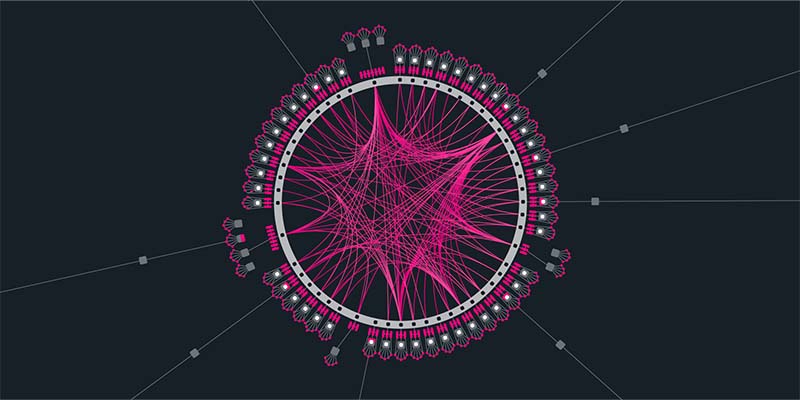
The Dollar Wrecking Ball: Why is a strong US dollar so dangerous?
The rising US dollar strength is starting to produce cracks across economies and markets.
The pioneer of interoperability
Polkadot plans to be the next-generation blockchain focused on developing interoperable, multi-chain ecosystems, which will promote decentralization and self-governance. If other crypto projects represent individual “branches”, then Polkadot aims to be the foundational “tree”.

Since the inception of Bitcoin, developers have been trying to find a way for individual chains to communicate and share data. Developers were able to bridge two blockchains, but they struggle to do it at scale and connect hundreds of chains. This is the problem that Polkadot is trying to solve.
The project was started by the former Ethereum CTO, Gavin Wood and the white paper was released in 2016. Due to Gavin’s history, many dubbed Polkadot an “Ethereum killer” but the project’s team has always made it clear that they wish to create a complement to other Layer 1’s and not to replace them. Their goal is to create a lively network of various blockchains, not a cemetery of failed projects. The protocol quickly gained traction and they were able to raise over 200$ million. The mainnet was launched in 2020, so the project is relatively new. Polkadot also owns a testing blockchain called Kusama, with a native coin KSM. The developers use the chain to test any features, which are then added to the main Polkadot chain.
How does Polkadot work?
Polkadot is not a smart-contract platform (like Ethereum or Solana). Instead, it provides an interoperable ecosystem; an infrastructure for other projects to build on top of. The core of the Polkadot structure is the relay chain, which provides the security aspect and acts as the messenger in the whole network. Developers of new projects create their own customized blockchains called parachains (parallel chains), which are then plugged into the relay chain. The relay chain can support up to 100 parachains. The chains can then easily exchange information, communicate, and share data via the relay chain. Users can create their own customized blockchains through Polkadot’s partner, Substrate. Their chains can be customized for any number of uses to fit their needs and goals. The idea is that all the chains can exchange data on a large scale while sharing the high level of security provided by the relay chain. Apart from parachains, the developers are also building bridges, which are supposed to make the Polkadot network compatible with external blockchains like Bitcoin or Ethereum.

The Polkadot ecosystem uses a customized Proof-of-Stake algorithm called Nominated Proof-of-Stake (NPoS). Users can take on two roles which are essential for the proper functioning of the network: validators and nominators. Validators must stake a minimum of 1.8 million DOT to acquire the role, which can be quite capital intensive for some. Validators secure the network and validate data on the chains. The minimum stake for the nominator is only 128 DOT. Nominators select the validators via voting, and they help the chain function by staking their DOT.
Benefits of Polkadot
· Scalable – Polkadot provides a very scalable network. A transaction can be done very quickly, and the protocol can process around 1,000 transactions per second. Plus, there is the added benefit of being able to make transfers between individual chains
· Customization – Every project has unique needs regarding the setup of its blockchain. Via Substrate, Polkadot lets protocols optimize their blockchain in any way they see fit
· Interoperability – the cornerstone of this project. Individual blockchains can seamlessly share data, which might give rise to completely new crypto ecosystems.
· Governance – each project can create its own overarching governance structure, which will fit their community culture. The protocols are not forced to succumb to any framework set by Polkadot
· Easy upgrade – a massive advantage of the network is the ability to seamlessly upgrade the whole network without a need for a hard fork (which creates two separate chains, one with the original structure and the other one containing new upgrades), thus avoiding the risk of splitting up the community
· Security – the relay chain provides robust security for the whole network through its validators.
Parachains
Projects, which want their customized blockchains to be added to the relay chain, need to win a parachain slot auction. Projects enter the auction where other users and holders of DOT bid for the most promising protocols. The project with the most DOT and KSM wins the auction, and its blockchain is added to the relay chain. As we mentioned earlier, Polkadot aims to add 100 parachains to its relay chains. The slot auctions won’t take place all at once but rather one by one.

Top 5 most promising projects on Polkadot:
1. Acala Network (ACA) – was the first project to win a parachains slot auction. It is a go-to DeFi smart-contract platform of the Polkadot ecosystem. Their main goal is to build Polkadot’s DeFi hub, offering an array of financial applications which can make use of the networks’ interoperability and security. Acala already offers several financial products:
a. Crypto-backed multi-collateralized stablecoin aUSD
b. Staking derivative L-DOT
c. Automated market maker
d. Decentralized exchange
2. Moonbeam (GLMR) – Like Acala, Moonbeam is a Layer 1 smart contract platform. The project focuses on creating cross-chain compatibility, mainly between Ethereum and Polkadot. Developers can move the applications effortlessly from one chain to another. Numerous APIs, bridges, oracles, Dapps and DeFi applications have already found a home on the Moonbeam platform.
3. Clover Finance (CLV) – another Layer 1 smart-contract blockchain focused on multi-chain compatibility (Polkadot ecosystem will certainly not lack advanced interoperability). One of the unique features that Clover offers is its two-way peg system which allows a transfer of an asset from a base chain to another chain
4. Efinity (EFI) – developed by Enjin, which by now is a more established crypto player. Efinity is a next-generation NFT platform, aiming for low gas fees by developing the project as an ERC-1155 token.
5. Centrifuge (CFG) – DeFi lending protocol that aims to make credit more accessible to small businesses. It will also provide a stable yield by opening pooled liquidity. Centrifuge already has a TVL (Total Value Locked) of almost 90$ million.

Join us right now >>> REGISTRATION
DOT token
There are three primary use cases for the Polkadot’s native token:
1. Governance – token owners are eligible to vote on all the critical upgrades and changes happening to the Polkadot ecosystem
2. Staking – users are motivated to stake their tokens by the very impressive yield offered on the platform
3. Bonding – is the act of voting for a project which aspires to win the parachains slot auction. Users have to “bond” (lock up) their token for a specified time
However, as Polkadot’s developers have been saying for some time, the design of the token is not suited for speculation, only for the use cases described above. The price of the token has several headwinds blocking it from a substantial price increase:
1. DOT has a significant inflation rate of about 8-10$ per annum.
2. Polkadot didn’t receive any post-ICO funding, so all their funds come from the selling of the token.
3. DOT is not used to pay for transaction costs on individual parachains; lacking a key demand factor, which many other smart-contract platforms have.
However, new projects built on the Polkadot ecosystem are expected to create more demand drivers for the DOT token and eventually help the price outperform.

Bottom Line
Polkadot is already one of the largest crypto platforms out there. However, it is still a young ecosystem with a lot of potential to grow into a vibrant network of projects and applications. Therefore, it certainly represents not only a good investment, but also a supportive and robust environment for any new projects.
If we were to mention some concerns regarding the project, one would be the fierce competition in this space. The elephant in the crypto room must certainly be Ethereum, which plans to roll out its shard system soon. The upgrade will create an interoperable ecosystem similar to the one brought by Polkadot. For the speculators, the concern would probably be DOT's tokenomics which will most likely not let you multiply your money 30-fold. However, for the humbler folks, there is still plenty of price upside to capture.
Our assumption is that if the project continues to make the right steps forward, it will find its well-deserved space in the crypto universe while nicely complementing other smart-contract platforms.
Polkadot certainly remains one of the most innovative and promising projects in the crypto universe.
Komentáře
Pokud si přejete přidat komentář, musíte být přihlášen.